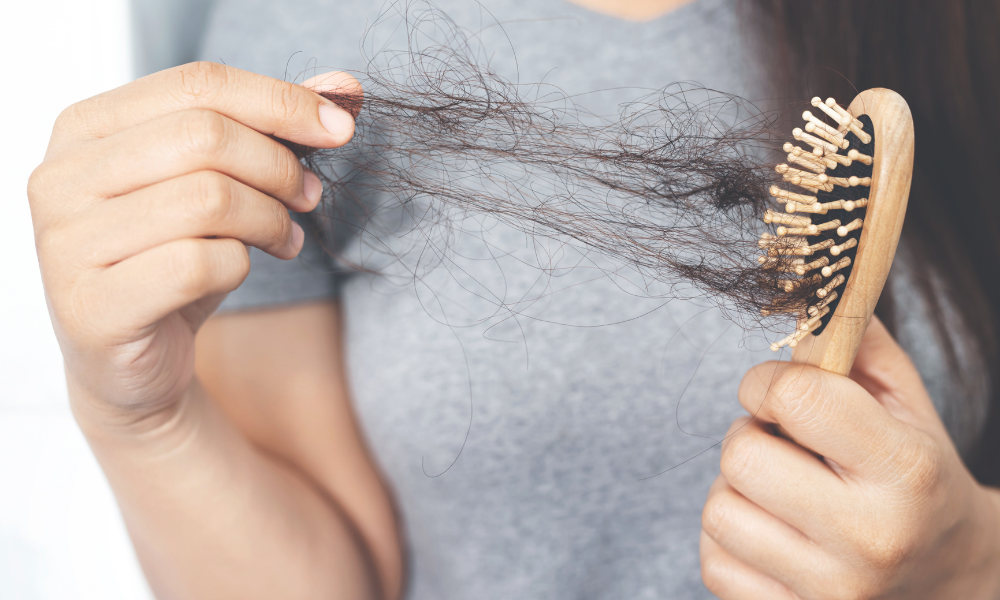
Drying and washing your hair regularly is very important for your hair. However, there are a number of blunders that many of us may be making that might be harming our hair’s health.
Your hair care routine is the key to healthy hair. kiwiwell brought you some examples of hair care mistakes that you might be making on a daily basis.
1. You’re washing your hair the incorrect way.
It’s true that washing your hair while standing in the shower is convenient, but shampooing it upside down has several advantages. “It allows the shampoo and conditioner to clean your hair without getting lost in the tangles, and it makes rinsing easier,” says Rebecca Kazin, a dermatologist at Georgetown University Hospital.
2. You’re brushing your hair when it’s wet.
When you comb wet hair, it breaks more easily than when it dries because the strands are swollen with water, brush carefully when your hair is wet.
3. You’re shampooing too often.
While we may want our hair to be squeaky clean, washing it more than three times a week can dry out the scalp and strip away essential oils that keep hair soft and shiny. “If you need to wash every day,” says Kazin, “you may not be using products that are right for your type of hair.” Look for sulfate-free shampoos made specifically for color-treated or curly hair.
4. You’re using hair conditioner for too long.
Apply conditioner to your hair for no more than five minutes, then rinse. Leaving it on longer gives the ingredients time to penetrate your hair shafts and eventually weigh them down.
5. Don’t stick to the same shampoo.
While many shampoo companies would like you to think that the formula is the same from bottle to bottle, that’s rarely the case. “Look for shampoos that have different types of surfactants,” says cosmetic chemist Ni’Kita Wilson. “For example, anionic detergents are great at cleaning your hair and scalp, but they can be extremely drying.” Look for a gentler cleanser such as a nonionic or amphoteric detergent instead.
6. You’re not bringing your conditioner down to your ends.
One mistake people often make is leaving their conditioners on top of their heads only – a practice that can cause buildup. To avoid this problem, Kazin suggests slathering it from mid-shaft to the ends of your hair. “This will ensure that you’re coating all of your hair strands.”
7. You’re not deep conditioning enough.
Deep conditioners are designed to help repair dry, damaged hair, so it’s important to cherish them. The best way? Leave them on for at least half an hour, then shampoo as usual.
8. You’re using a brush with metal bristles.
Brushes with metal bristles can damage your hair and even lead to early hair loss. bristles are much more gentle on your strands and distribute oils along the lengths of your hair without creating static.
9. You’re putting too much product in your hair.
If you’re using a lot of products and they aren’t working – which is often the case with heavy styling creams – you can end up packing too much onto your strands. Over time, this makes the texture feel gummy and stiff and causes a buildup that blocks pores and weighs down locks. Start by picking one leave-in conditioner and using it twice a week. If you feel your hair needs more hydration, use your product once a week instead of every day.
10. You’re using gel with silicone.
Silicone-based gels give great shine but tend to weigh down thin hair. If your hair is fine, look for a gel without silicone or try a styling cream instead.
11. You’re brushing against the grain.
Although you might think it’s the quickest way to get rid of tangles, brushing your hair against the direction in which it grows can cause breakage and split ends. If you do need to brush through knots, take a wide-tooth comb that’s specifically designed for detangling and place it at the tips of your hair before working gently upwards towards your scalp.
12. You’re sleeping with wet hair at night.
Always sleep with your hair wrapped in a towel to keep it from getting frizzy overnight. “A cotton pillowcase will also help,” says Kazin. “The material will help absorb moisture and won’t harm your strands.”
